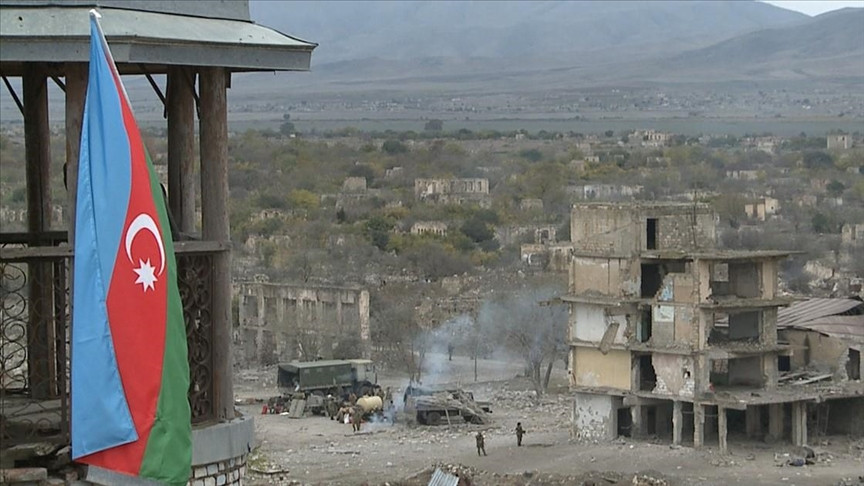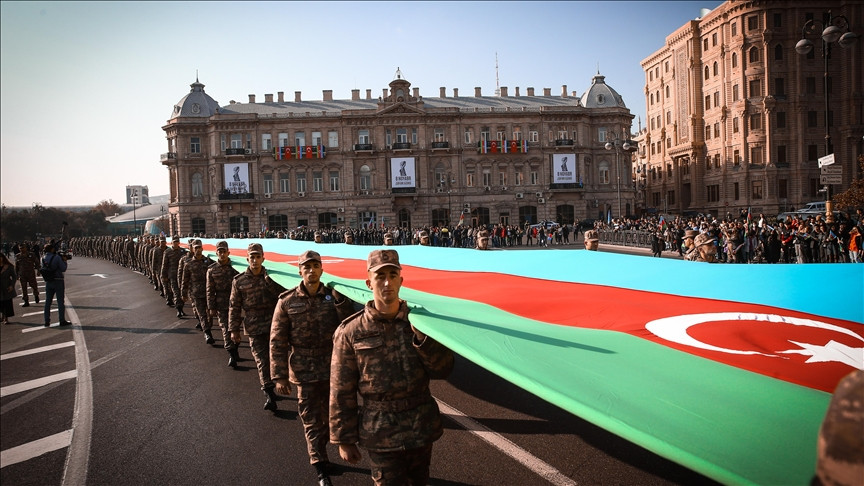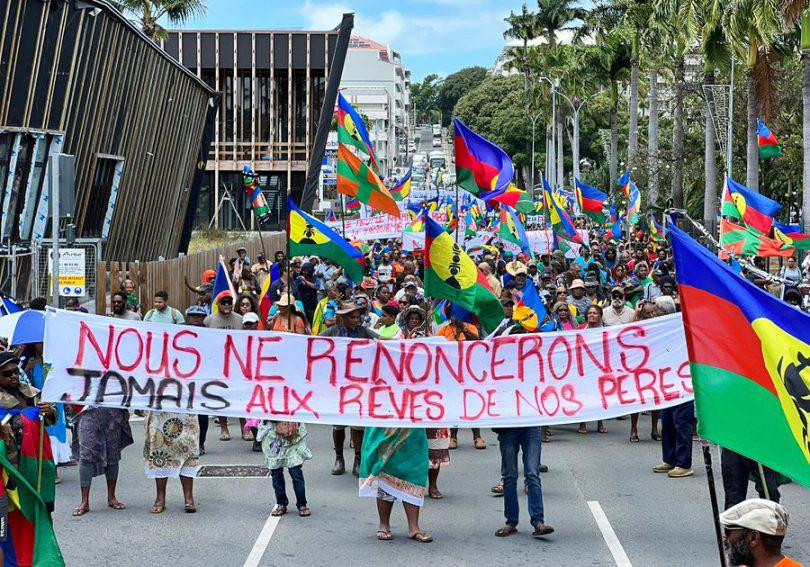When the Second Karabakh War (September 27 to October 10, 2020) began, the leaders of Armenia and its regime in occupied Karabakh announced that military operations would be conducted until the complete destruction of the enemy – Azerbaijan. These slogans were consistent with the persistent, prevailing opinion in Armenian society that, in case of a resumption of hostilities, Armenian tanks would end up in Baku. They did end up there; but as war trophies of the Azerbaijani army – and the fact that this happened is partly due to a tradition of myth making, rooted in the Armenian political and intellectual elite. Armenian myths helped Azerbaijan to win the Second Karabakh War, but the problem remains: The myths, which have deep historical roots, continue against the background of an acute political and economic crisis in Armenia. Moreover, they do not allow Armenia and its society to abandon a parallel, imagined world and start the development of good neighborly relations in the region.
Let us recall how Armenians – in Armenia itself and in the diaspora – reacted to the events of the Second Karabakh War. They refused to believe the information on territorial losses, and the news about offensive of the “Azery,” as they pejoratively began to call the people with whom they had lived in peace for centuries, were ridiculed on social networks. Here, one should not blame the military censorship of “democrat” Nikol Pashinyan (if he were a true democrat he would try, at least, to change the ultra-nationalist narrative in Armenian society and jettison the idea of territorial expansion, referring to the ancient king Tigran II). Armenians in the Diaspora also echoed the misinformation of the Armenian Defense Ministry. In the age of the Internet, one can easily check how the official propaganda matches with reality, but the majority of Armenians continued to believe in the myth of their invincibility.
Russian military “experts,” who were skeptical about the capacity of the less “disciplined” Azerbaijani army, also contributed to the Armenian mythology. Along with that line of thinking, Western experts misled themselves about the failure of Azerbaijan’s “blitzkrieg.” Azerbaijan, meanwhile, slowly but steadily recovered its lands. As a result, after 44 days of hostilities, Azerbaijan practically defeated the Armenian army and liberated a significant part of its occupied territories. On November 10, Armenian society woke up with the shock of learning that Armenia had lost a significant part of Karabakh. Thus, Armenian myth making had a high cost and serious implications.
An analysis of the Armenian narrative, or rather myths, reveals the damage that they inflict, primarily on Armenian society and the South Caucasus region as a whole. Putting aside all the propaganda and seriously analyzing the history of the conflict will reveal the causes of the “Armenian tragedy,” as it was dubbed by American expert Joshua Kucera: the current state of an Armenian society that is full of wishful thinking.
Former adviser to the Armenian President Levon Ter-Petrosian, Gerard Libaridian, noted in several recent articles that Armenians, both in Armenia and in the diaspora, had created, far from reality, a dream world. It seemed to the majority of Armenians that war was fun.
This myth was created by false conclusions about the results of the first war in Karabakh, when the Armenians managed to occupy Nagorno-Karabakh and seven regions around it in 1992–94. When the conflict began, in autumn 1987 to the winter of 1988, the Armenian nationalists were well prepared for it. During the first years of the conflict, in 1988–89, they managed to expel the Azerbaijani population from Armenia and transfer all political and military action to the territory of Azerbaijan. The collapse of the USSR in December 1991 was marked by internal struggle and a change of power in Azerbaijan. From March 1992 to June 1993, five heads of state formally replaced one another – two acting presidents and three actual ones. Against this backdrop, Armenian armed groups managed to capture Nagorno-Karabakh and seven regions around it. In these operations, they were greatly assisted by Russian military forces. That is not acknowledged openly, but occasionally former Russian officers make confessions in social media about the course of the war in 1992–94 that directly confirm Russia’ s participation. It is also true that ex-Soviet officers also sometimes rendered “help” to the Azerbaijani side, for example, in the summer of 1992, but it was short-term operations. In the winter of 1993–94, Azerbaijan launched a counteroffensive and managed to liberate the city of Horadiz. The matter did not go further, as the Russian military intervened on the side of Armenia, and the Russian “peacemaker and mediator,” Vladimir Kazimirov, in private conversations with officials in Azerbaijan, threatened the country with the loss of Ganja, its second largest city.
Thus, the success of the Armenian army (it is indeed Armenian army, not the propaganda myth of the “Nagorno-Karabakh defense army”) was determined by two factors: civil war in Azerbaijan and considerable assistance from the Russian army, in particular from April 1993 to May 1994. Here, it should also be noted that, in contrast with Armenia during the Second Karabakh War, the failure of Azerbaijan at the military front in the First Karabakh War became known to the public almost immediately (with the exception of the massacre in Khojaly, which cost President Ayaz Mutallibov his position in March 1992). In general, people in Azerbaijan are still inclined, in my opinion, to excessive self-criticism, despite the existing stereotypes that position Azerbaijan as a “country without alternative thinking” – an opinion that is especially widespread among Western experts. To a certain extent this degree of nihilism probably assists Azerbaijanis to realistically assess their capabilities and, ultimately, to achieve success.
Propaganda, which was very cleverly developed by Armenian nationalists from 1988 to get the support of the Western and Russian political establishments, intellectuals and media representatives, led, ultimately, to political and military disaster for Armenia itself. The myth of the “first Christian state,” whose people were for centuries under the oppression of Muslims and superior to “the wild hordes of Turkic nomads,” found wide support in Armenian society and was channeled to mobilization around warlords. Meanwhile, those warlords such as Robert Kocharyan and Serzh Sargsyan, who later became presidents of Armenia, amassed their money from looting the property of Azerbaijanis in the occupied territories and then plundered and embezzled Armenia itself.
But further tragic events might happen in the future if the approach of myth making will not stop. It appears that there has not been any significant change after the actual surrender of November 10, 2020, and some Armenian experts term realism “defeatism.” Social networks are full of xenophobic attacks against Azerbaijanis, slogans of revenge are voiced in the streets, and the same politicians, such as Robert Kocharyan, who are responsible for the economic stagnation, demographic crisis, and military defeat continue to play a significant role in the country's political arena.
Arman Grigoryan, a lecturer at Lehigh University in the United States, noted that the national myth so strongly prevails in the Armenian media that reasonable voices are almost inaudible. One of the enduring myths is the “Armenian Question”: the creation of state within the boundaries of “Great Armenia.” This myth seriously undermines the normal development of the country. It is also indicative that the Armenian diaspora abroad is also a radical force that prevent the normalization of relations between Armenia and Azerbaijan and Turkey.
The history of the “Armenian Question” highlights the role of empires (Russian and Western) in igniting the ethnic conflict between Armenians and Turks. At the end of the 19th century, during the heyday of nationalism, when the Armenians, like many other peoples, developed ideas of an independent state, the Western powers began to promote the issue of Armenian independence from the Ottoman Empire. They strongly encouraged separatist forces to lay their hands on Ottoman territory, which eventually happened. After the collapse of the Ottoman Empire, Britain and France, having acquired large swathes of territory in the Middle East, forgot about the “Armenian Question” for a long time. At the same time, Armenian nationalist organizations promoted the idea of the self-determination of Armenians, both in the Ottoman and Russian empires. In the early 19th century, during the Russian conquest of the South Caucasus, Armenians had rendered some assistance to the Russian troops. After the seizure of the region, the Russian administration carried out a massive resettlement of ethnic Armenians to the territory of modern Armenia, which was previously the Erivan Khanate, inhabited mainly by Azerbaijanis. On these lands, the Russians created an Armenian province in 1828, which they liquidated twenty years later, fearing the growth of nationalist sentiments among the Armenians. In the early 20th century, the Russian administration enacted a series of measures against the Armenian Church and temporarily closed Armenian schools.
When the First World War began, the Allied Powers (Britain, France, and Russia) spurred an armed movement of the Armenian population against the Ottoman government. In December 1914, Russian Emperor Nicholas II declared that “Armenians from all countries are hurrying to enter the ranks of the glorious Russian Army, and with their blood, to serve the victory of the Russian Army... Let the Russian flag wave freely over the Dardanelles and the Bosporus, let the peoples remaining under the Turkish yoke receive freedom through your will. Let the Armenian people of Turkey, who have suffered for the faith of Christ, be resurrected to a new and free life” (Stanford Jay Shaw and Ezel Kural Shaw, History of the Ottoman Empire and Modern Turkey, vol 2: Reform, Revolution, and Republic: The Rise of Modern Turkey, 1808-1975, New-York: Cambridge University Press, 1977, p. 314). However, a year later, Caucasus viceroy Grand Duke Nicholay Nickolayevich stated that “there is no Armenian question, any more than there is a Iakut question.” (Peter Gatrell, A Whole Empire Walking: Refugees in Russia during World War I, Bloomington: Indiana University Press, 1999, p. 152.)
A series of tragedies in the late 19th and early 20th centuries impressed a strong imprint on Armenian–Turkish relations. The propaganda of the Armenian nationalists, backed by Russian and Western intellectual elites, has created an atmosphere of hatred and consequently distorted the history of Armenian-Turkish coexistence. As the Armenian historian and social activist Philip Ekozyants notes, Armenian historians have perverted and forgotten its 400-year-long history in the Ottoman Empire, where the authorities referred to Armenians as milleti sadiq – the loyal people. In his opinion, the history of Armenian–Turkish relations was one of joint cohabitation. The fact that Armenians and Azerbaijanis are still arguing about their culinary and musical heritage manifests a deep cultural interaction. However today, the whole history of the Armenians in Armenia is presented as a process of survival under the yoke of “genocidal Turks.” This myth of age-old oppression, which is especially popular in the Armenian diaspora, supported by Russian and Western intellectual circles, deprives Armenia of its geography. This myth was beneficial for the imperial projects of Entente, then the Soviet Union, and now Russia and France in their geopolitical games in the Middle East and the Caucasus.
After Armenia became an independent state following the collapse of the Russian Empire in 1918, the nationalists, led by the radical party Dashnaktsutyun, unleashed wars against Azerbaijan and Georgia. Eventually, however, all three young republics fell victim to the Bolshevik expansion, and Moscow Communists recreated the borders of the former Russian Empire in the Caucasus.
The confrontation between the USSR and Turkey, a NATO member, contributed to fueling anti-Turkish sentiments led by Armenian nationalist historians and supported by official Soviet propaganda. Armenian (and following them Western) historians proliferated the myth about Stalin’s gift to Azerbaijan in the form of Nagorno-Karabakh autonomy, which, as noted by Armenian scholar Arsen Saparov, is not true. At the same time, Armenian historians keep silent about the fact that, in 1921, Armenia received from the Bolsheviks Zangezur, or Syunik: territory that the Azerbaijanis consider their historical lands. The success of the Armenian irredentist project in 1988–1994 created another myth of successful historical expansion: that the Republic of Armenia, since 1918, has gradually recreated the borders of Great Armenia – another myth that appeared in historical documents only relatively recently, in the 18th century, propagated by Armenian monk Mikayel Chamchian (Kamala Imranli-Lowe, “Reconstruction of the ‘Armenian Homeland’ Notion,” Middle Eastern Studies, 51:4, (2015), 540–562). In fact, the territory of Armenia did increase from 1918, as in 1921 it took officially control over Zangezur/Syunik and, by 1994, the country was in full control of Nagorny-Karabakh and seven regions around it. President Serzh Sargsyan (in office 2008–2018) even began to talk about the possibility of further expansion into Turkey. Thus, speaking to the country’s youth in 2011, he noted that the tasks of the new generation would be to “liberate Western Armenia,” i.e., territories in the east of Anatolia. In August 2020, Nikol Pashinyan also spoke about the need to restore the “historical territories” of Armenia in accordance with the 1920 Treaty of Sevres, which never came into legal force. However, the same visionary mentioned above, Jirair Libaridian, on September 9, 2020, a few weeks before the Second Karabakh War, warned the Armenian government that by such careless statements they actually formally put forward territorial claims to Turkey.
It is not surprising that Turkey strongly supported Azerbaijan in the recent war. However, another propaganda myth, that about the huge crowd of Middle Eastern jihadists fighting for Azerbaijan, prevents a sober assessment of the reasons for the defeat of Armenia in the Second Karabakh War. Armenians dismiss the strength of the Azerbaijani army, pointing to the Turkish Bayraktar drones. It is true that Azerbaijan purchased a number of Turkish drones, but many more were previously acquired from Israel. Azerbaijan’s Special Forces prevailed against Armenians in the hand-to-hand battle for Shusha. Nevertheless, it is much easier to find another reason for the victory of Azerbaijan rather than to recognize the advantage of Baku’s military machine. The myths that Armenian propagandists deliver to Western and Russian media and experts will have a boomerang effect that will create a trap for Armenian society as a whole.
Myths and specific historical narratives exist in all nations, and all governments are engaged in propaganda. But, alas, in Armenia and the diaspora, these myths have led to extreme hatred towards neighbors, arrogance, and hypertrophied xenophobia. They led to the loss of the political and economic independence of Armenia and eventually in resulted defeat in the Second Karabakh War. Millions of dollars from the Armenian diaspora aimed at strengthening illegal settlements in the occupied territories of Azerbaijan and many other projects were ultimately wasted. More tragic consequences relate to the lives of thousands of people who perished in Armenia and Azerbaijan. At the same time, as noted by the Armenian human right activists Georgy Vanyan, the wealthy political establishment in Armenia and the diaspora stayed away from military service during the war.
So far, the modern political discourse in Armenian society and the diaspora has not changed. The nationalist dream of revenge and messages about the “status” of Karabakh, which entail the continuation of the conflict, still prevail in the political discourse. In Armenia, nationalists have not realized that the international community has not accepted the country’s territorial claims with regard to Azerbaijan, and both Russia and the West have strictly pursued their national interests. There is only one means to achieve durable peace – promoting good neighborly relations with Azerbaijan and Turkey.








